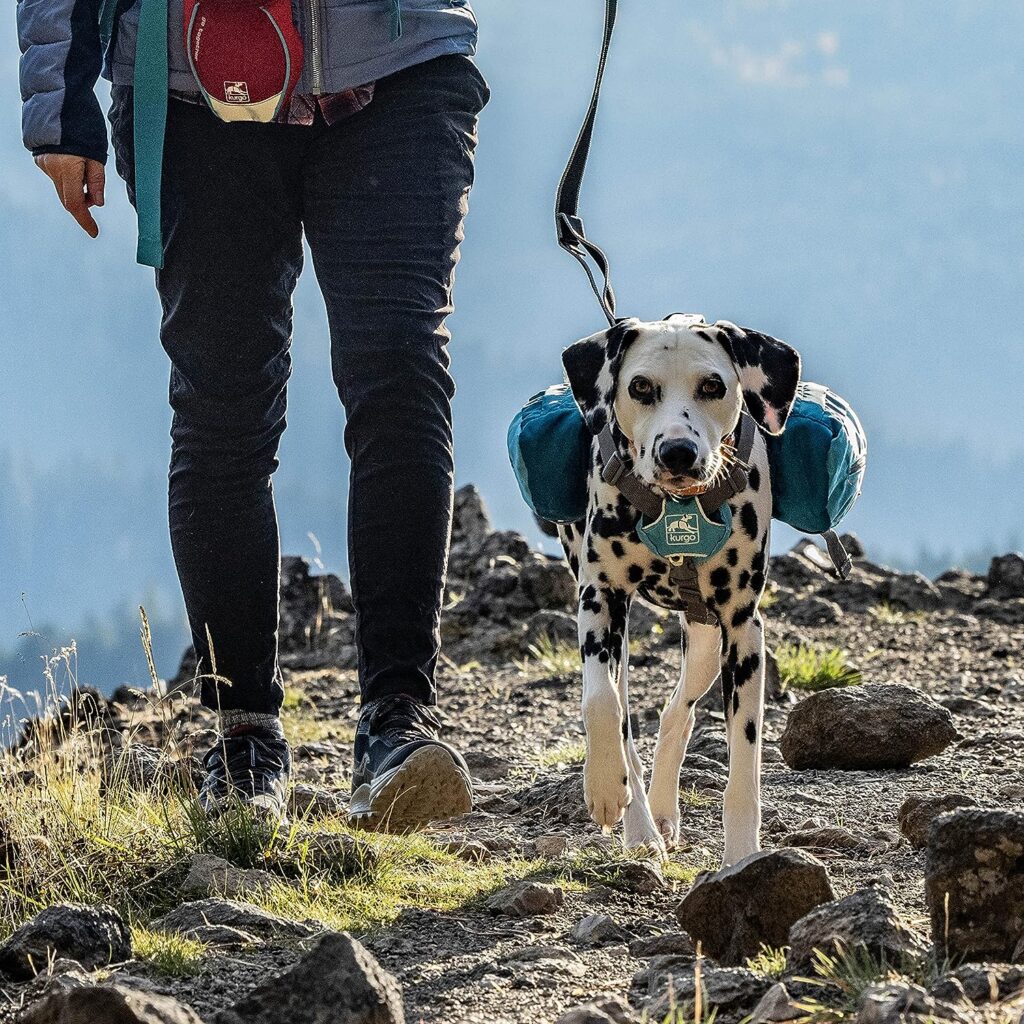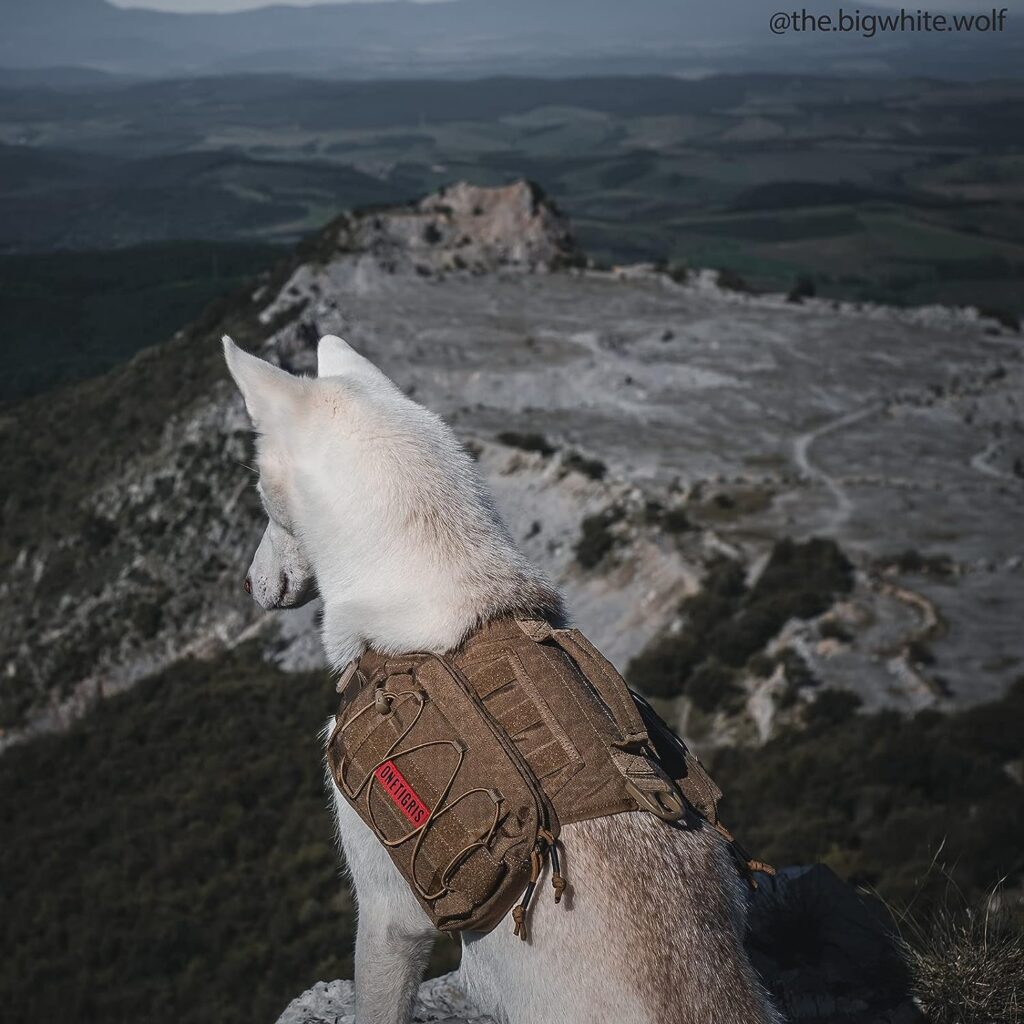- August 25, 2023
Unleash Adventure: Choosing the Best Backpack for Your Canine Companion

As an avid outdoor enthusiast and dog lover, I understand the importance of finding the perfect gear for your furry friend. When it comes to hiking, camping, or any other outdoor adventure, a dog backpack can be a game-changer. Not only does it allow your dog to carry their own supplies, but it also provides them with a sense of purpose and fulfillment. In this article, we will explore the benefits of using a dog backpack, things to consider before making a purchase, different types of dog backpacks and their features, and how to properly fit and train your dog to wear one. So let’s dive in and find the best backpack for your canine companion.
The Benefits of Using a Dog Backpack for Outdoor Adventures
Using a dog backpack can greatly enhance your outdoor adventures with your furry friend. One of the main benefits is the added convenience of having your dog carry their own supplies. This can include water, food, treats, poop bags, and even your personal items such as keys, wallet, and phone. By distributing the weight between you and your dog, it reduces the strain on your own back and allows you to have more freedom of movement.
Another advantage of using a dog backpack is that it provides mental and physical stimulation for your canine companion. Dogs are naturally active creatures and enjoy having a job to do. Wearing a backpack gives them a sense of purpose and can help with their overall behavior and obedience. It also tires them out faster, which can be beneficial for high-energy breeds.
Additionally, using a dog backpack promotes bonding between you and your dog. It creates a sense of teamwork and strengthens the bond you share. As you embark on adventures together, your dog will look up to you as their leader and will trust you to guide them. It’s a wonderful way to deepen your relationship and create lasting memories.
Things to Consider Before Buying a Dog Backpack
Before purchasing a dog backpack, there are several factors you should take into consideration. First and foremost, you need to assess the size and breed of your dog. Different backpacks are designed to fit different breeds, so it’s crucial to measure your dog’s girth, chest, and length to ensure a proper fit. Keep in mind that the backpack should be snug but not too tight, allowing your dog to move comfortably.
Another important consideration is the weight capacity of the backpack. You want to make sure it can carry the necessary supplies without putting too much strain on your dog’s back. It’s recommended to start with a lighter load and gradually increase the weight as your dog gets accustomed to wearing the backpack.
Durability is also a key factor. Look for a backpack made from high-quality materials that can withstand the rigors of outdoor adventures. It should be water-resistant, tear-resistant, and have reinforced stitching. Additionally, consider the ease of cleaning and maintenance, as your dog’s backpack will inevitably get dirty.
Lastly, think about the overall design and features of the backpack. Consider the number and size of compartments, as well as any additional features such as reflective strips for increased visibility, padded straps for comfort, and a handle for better control of your dog.
Different Types of Dog Backpacks and Their Features
When it comes to dog backpacks, there are several different types to choose from, each with its own set of features. Let’s explore the most common types:
- Daypacks: These are the most versatile type of dog backpacks and are suitable for most outdoor activities. They typically have a single large compartment with smaller pockets for organization. Daypacks are lightweight and designed for shorter adventures.
- Multi-day Packs: If you’re planning longer hikes or camping trips, a multi-day pack is the way to go. These backpacks have larger carrying capacities and more compartments to accommodate all the necessary supplies for extended outings.
- Saddlebag Packs: Saddlebag packs are designed to mimic traditional saddlebags and are attached to the sides of your dog’s body. They provide an even distribution of weight and are great for larger breeds. Saddlebag packs often have detachable compartments, allowing you to customize the load.
- Hydration Packs: For hot weather or long hikes, a hydration pack is essential. These backpacks come with a built-in water reservoir and a drinking tube, allowing your dog to stay hydrated on the go.
Each type of backpack has its own advantages and disadvantages, so consider the specific needs of your dog and the activities you’ll be engaging in before making a decision.
How to Properly Fit a Dog Backpack
Proper fit is crucial when it comes to choosing a dog backpack. A poorly fitting backpack can cause discomfort, chafing, and even injury to your dog. Here are the steps to ensure a proper fit:
- Measure your dog: Use a flexible tape measure to measure the girth, chest, and length of your dog. Refer to the sizing charts provided by the manufacturer to determine the appropriate size.
- Adjust the straps: Start by adjusting the straps on the backpack to their loosest setting. Place the backpack on your dog’s back and secure the chest strap first, followed by the belly strap. Make sure the backpack sits snugly against your dog’s body without restricting their movement.
- Check for clearance: Ensure that there is enough clearance between the backpack and your dog’s legs. The backpack should not rub against their skin or interfere with their natural gait.
- Test the fit: Once the backpack is securely fastened, have your dog walk around and perform some basic commands. Observe their movements and behavior to ensure they are comfortable and not experiencing any discomfort.
Remember, fitting a dog backpack is not a one-time process. As your dog grows or gains/loses weight, you may need to readjust the straps accordingly. Regularly check the fit to ensure your dog’s comfort and safety.
Tips for Training Your Dog to Wear a Backpack
Training your dog to wear a backpack requires patience, consistency, and positive reinforcement. Here are some tips to help you get started:
- Introduce the backpack gradually: Start by allowing your dog to sniff and investigate the backpack. Reward them with treats and praise for showing interest. Gradually introduce the backpack by having your dog wear it for short periods indoors.
- Add weight gradually: Begin with an empty backpack and gradually add lightweight items such as small towels or soft toys. Reward your dog for wearing the backpack and walking around with it. Increase the weight gradually over time, always monitoring your dog’s comfort level.
- Practice with distractions: Once your dog is comfortable wearing the backpack, introduce distractions such as outdoor noises, other dogs, or unfamiliar environments. This will help them focus and remain calm while wearing the backpack during real adventures.
- Obedience training: Incorporate obedience training while your dog is wearing the backpack. Practice commands such as sit, stay, and heel to ensure they are responsive and well-behaved while wearing the backpack.
Remember, training takes time, so be patient and consistent. Always reward your dog for their efforts and make the training sessions fun and enjoyable.
Top-rated Dog Backpacks for Hiking and Outdoor Activities

Now that you understand the benefits of using a dog backpack and how to properly fit and train your dog to wear one, let’s explore some top-rated dog backpacks that are perfect for hiking and outdoor activities.
- Ruffwear Approach Pack: This highly-rated backpack is designed for all-day adventures. It features a lightweight and streamlined design, with multiple storage compartments and a padded handle for extra control.
- Kurgo Baxter Dog Backpack: The Kurgo Baxter backpack is known for its durability and functionality. It has a large carrying capacity, adjustable straps for a custom fit, and a reflective trim for increased visibility.
- Outward Hound DayPak Dog Backpack: Ideal for shorter hikes, the Outward Hound DayPak is lightweight and comfortable. It has expandable pockets, a breathable mesh lining, and a built-in harness for added security.
- Mountainsmith K-9 Dog Pack: The Mountainsmith K-9 pack is built for rugged adventures. It is made from durable materials, has adjustable straps for a secure fit, and features a reflective trim for enhanced visibility.
These are just a few examples of the top-rated dog backpacks available on the market. Consider your specific needs and preferences when choosing the best backpack for your canine companion.
Large Dog Backpacks for Bigger Breeds

If you have a large breed dog, finding the right backpack can be a bit more challenging. However, there are options available specifically designed for bigger dogs. Here are some top picks:
- OneTigris Dog Backpack: The OneTigris backpack is built to withstand heavy loads and is perfect for large and strong breeds. It has a rugged construction, adjustable straps, and a large carrying capacity.
- Ruffwear Palisades Pack: The Ruffwear Palisades pack is designed for larger dogs and can handle long hikes and multi-day adventures. It has removable saddlebags, a hydration bladder, and a load compression system for a secure fit.
- Lifeunion Tactical Dog Backpack: This tactical backpack is perfect for larger breeds that need extra durability and carrying capacity. It has multiple storage compartments, adjustable straps, and a sturdy handle for better control.
Remember, it’s important to measure your large dog accurately and choose a backpack that can handle their size and strength. Always prioritize comfort and ensure a proper fit.
Dog Saddlebags vs. Backpacks: Which is Better?

When it comes to choosing between dog saddlebags and backpacks, there is no definitive answer. Both options have their own advantages and it ultimately depends on your personal preferences and the specific needs of your dog. Let’s compare the two:
Dog Saddlebags: Saddlebags are attached to the sides of your dog’s body, providing a balanced load distribution. They are great for larger breeds and dogs with a sturdy build. Saddlebags often have detachable compartments, allowing you to customize the load.
Backpacks: Backpacks have a more traditional design and are worn on your dog’s back. They typically have a larger carrying capacity and more compartments for organization. Backpacks are suitable for most breeds and provide a snug fit.
Consider factors such as your dog’s size and build, the activities you’ll be engaging in, and your personal preferences when choosing between saddlebags and backpacks. Ultimately, the most important aspect is ensuring a proper fit and comfort for your dog.
Essential Items to Pack in Your Dog’s Backpack for Hiking Trips
Now that you have chosen the perfect backpack for your dog, it’s time to pack it with essential items for your hiking trips. Here are some items that should always be included:
- Water: Carry enough water for both you and your dog. Consider a collapsible water bowl or a hydration pack for your dog’s backpack.
- Food: Pack enough food for the duration of your hike, along with a collapsible food bowl.
- First Aid Kit: Have a basic first aid kit that includes bandages, antiseptic wipes, tweezers, and any necessary medications.
- Poop Bags: Always clean up after your dog. Pack enough poop bags to dispose of waste properly.
- Leash and Collar: Carry a spare leash and collar in case of emergencies or equipment failure.
- Identification: Ensure your dog is wearing proper identification tags with up-to-date contact information.
- Extra Gear: Depending on the weather and duration of your hike, consider packing a lightweight jacket, booties for protection, and a blanket for your dog to rest on.
Remember to distribute the weight evenly between the two sides of the backpack to maintain balance and prevent strain on your dog’s back.
Maintenance and Care Tips for Dog Backpacks
To ensure the longevity of your dog’s backpack, proper maintenance and care are essential. Here are some tips to keep in mind:
- Cleaning: Regularly clean the backpack to remove dirt, mud, and debris. Follow the manufacturer’s instructions for cleaning, as some backpacks may be machine washable while others require handwashing.
- Drying: Allow the backpack to air dry completely before storing it. Avoid exposing it to direct sunlight or high heat, as this can damage the materials.
- Inspect for Damage: Routinely inspect the backpack for any signs of wear and tear. Check the stitching, straps, and buckles to ensure they are in good condition. Replace any damaged parts promptly to maintain the backpack’s integrity.
- Storage: Store the backpack in a cool, dry place away from direct sunlight. Avoid folding it excessively, as this can cause creases and weaken the material.
By following these maintenance and care tips, you can ensure that your dog’s backpack remains in excellent condition for many adventures to come.
Conclusion
Choosing the best backpack for your canine companion is an important decision that can greatly enhance your outdoor adventures together. Consider the benefits of using a dog backpack, the factors to consider before making a purchase, the different types and features available, and the proper fit and training techniques. Remember to pack essential items for your hikes, properly maintain and care for the backpack, and enjoy the bond and sense of purpose it brings to both you and your furry friend. So, unleash adventure and embark on unforgettable journeys with your canine companion by your side!
Tags
- Backpacking, Camping, Dogs, Gear, Hiking
What do you think?
Related Articles

New Puppy Checklist: Gear You’ll Need for Your New Dog
Getting a new puppy is really exciting, but before you welcome them home, it’s important to prepare your space for them. Since puppies need a

How Big Do Mini Poodles Get? Vet Reviewed Average Weight & Growth Chart – Dogster
The information is current and up-to-date in accordance with the latest veterinarian research. Learn more » When you buy a Miniature Poodle, you might not

Can Police Dogs Smell Nicotine? Vet Verified Facts & Info – Dogster
The information is current and up-to-date in accordance with the latest veterinarian research. Learn more » While cigarette sales have been declining steadily for decades,

How Old Is 5 in Dog Years? Vet-Approved Guide to Each Size of Dog – Dogster
The information is current and up-to-date in accordance with the latest veterinarian research. Learn more » A common method for calculating a dog’s age is

